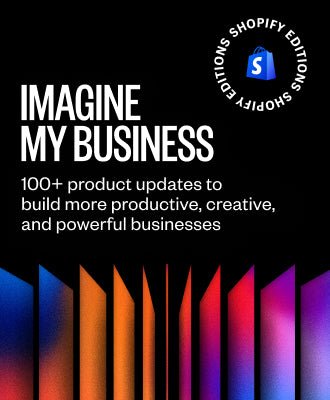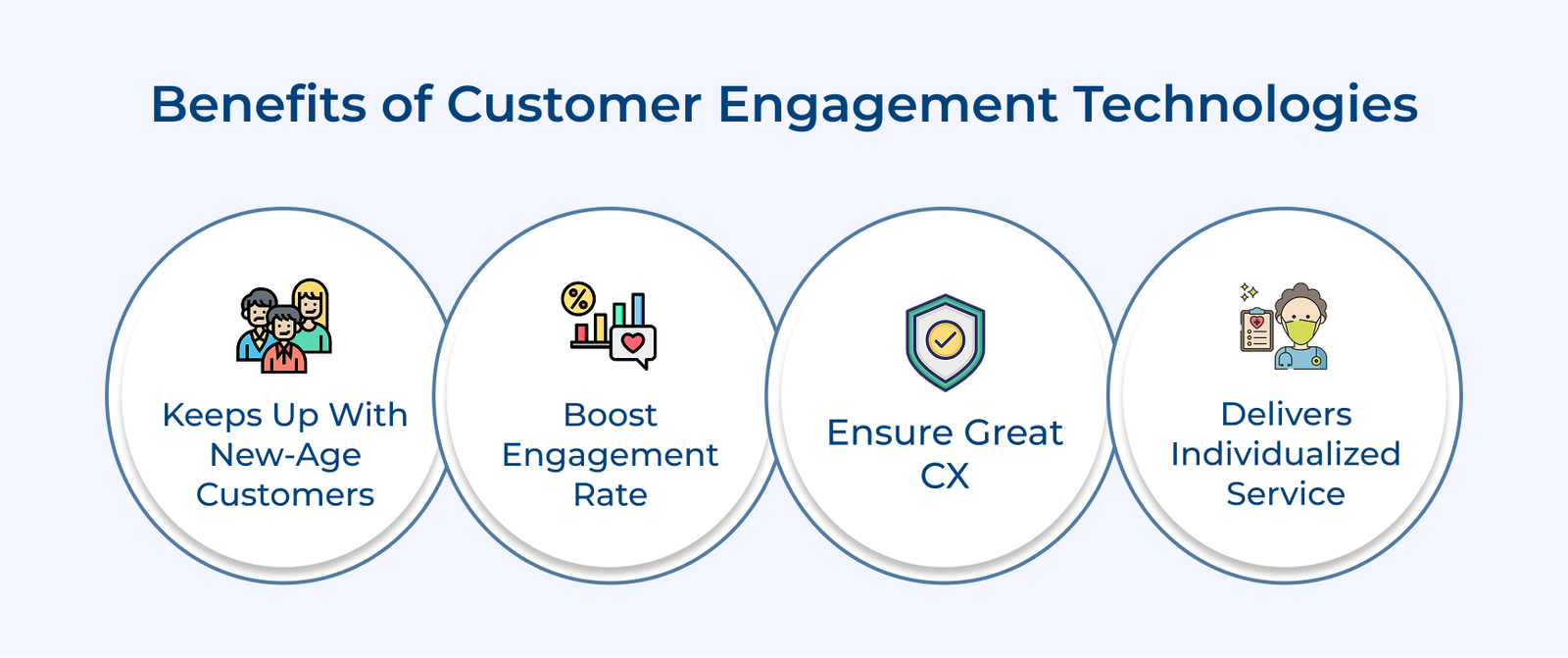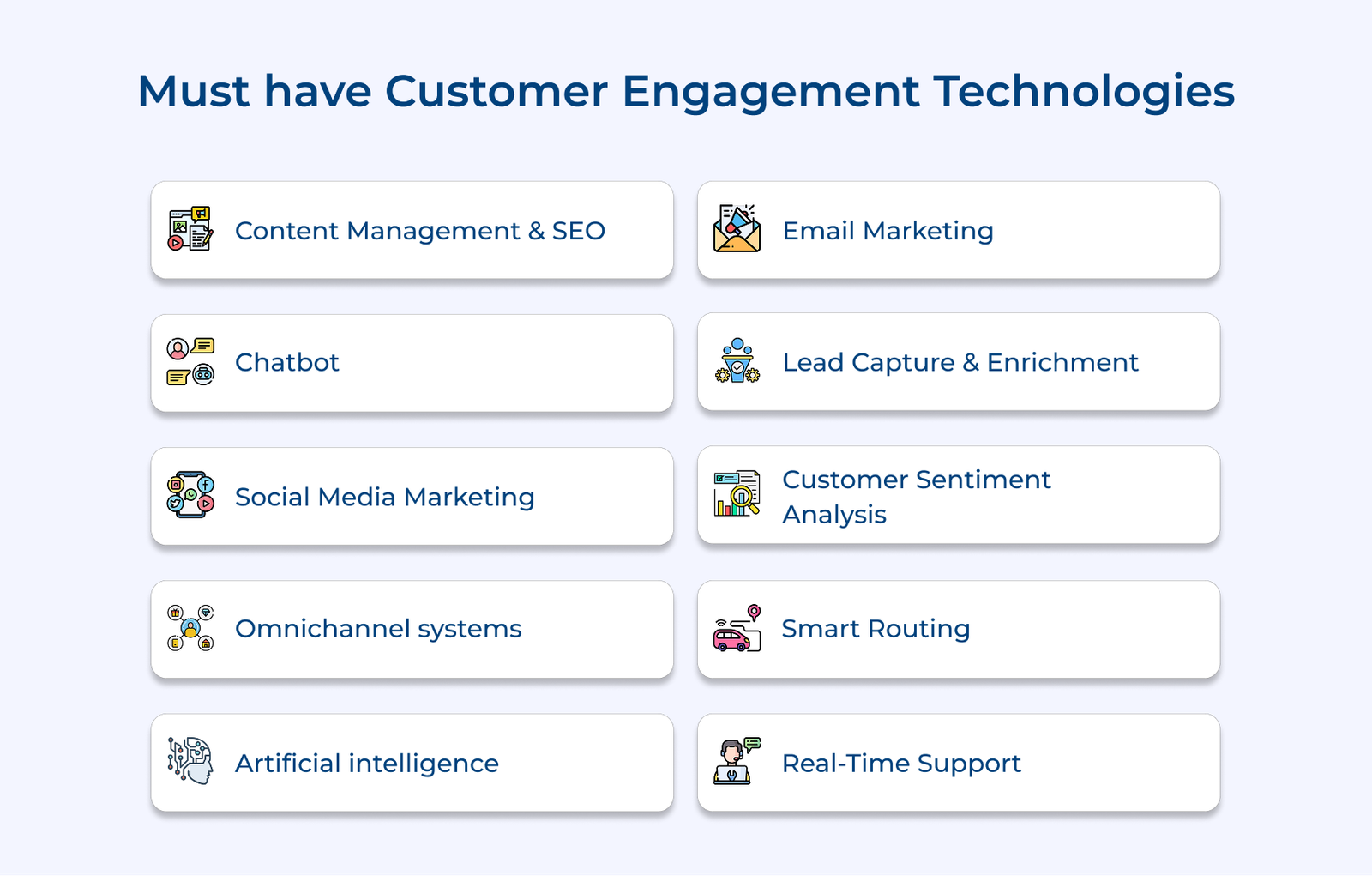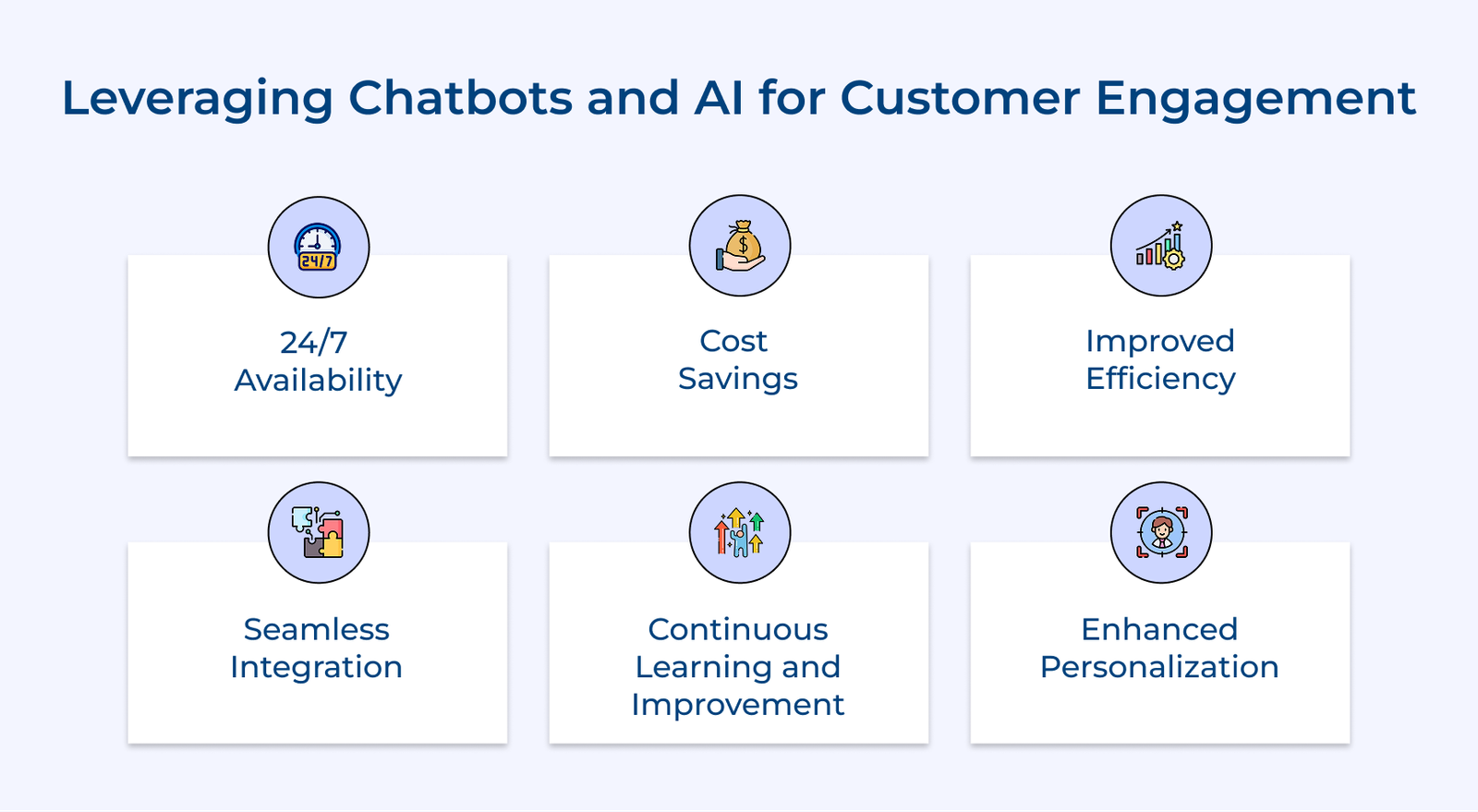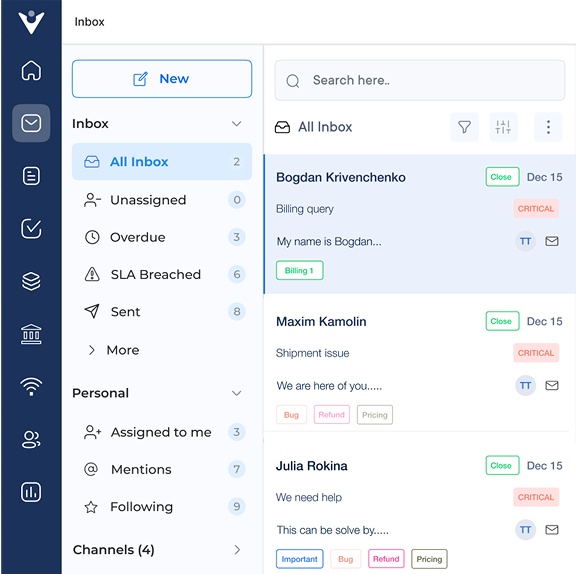Examples of the technologies include content management systems (CMS), SEO tools and content optimization platforms. A CMS streamlines the creation, organization and publication of content. SEO tools help analyze and optimize content for better search engine rankings. Content optimization platforms provide insights into content performance and suggest improvements for better engagement.
Pro tips:
- Prioritize quality and relevance: Create high-quality, informative and engaging content that addresses the specific needs of the target audience. Regularly update and refresh content to maintain relevance.
- Optimize for user experience: Ensure that the content is easily accessible, visually appealing and mobile-friendly. Utilize SEO techniques to improve discoverability and navigation, enhancing the user experience.
3. Chatbots
Chatbots are rapidly emerging as a powerful customer engagement technology, enhancing the customer experience (CX) by providing instant and automated support. The conversational AI-powered virtual assistants can handle routine inquiries and tasks efficiently. 74% of users prefer interacting with chatbots when seeking answers to FAQs.
Examples of chatbots include conversational AI tools integrated into websites, mobile apps and messaging platforms. The chatbots can assist customers with tasks such as tracking orders, answering product queries and guiding them through the process.
Best practices:
- Leverage natural language processing (NLP): Implement advanced NLP capabilities to ensure chatbots can understand and respond to natural language queries accurately.
- Personalize interactions: Utilize customer data and preferences to personalize chatbot interactions. Offer tailored recommendations and address customers by name for a more engaging experience.
- Enable seamless handoffs: Chatbots excel at handling routine tasks and integrate seamless handoffs to human agents for complex queries.
4. Social Media Marketing Technologies
Social media marketing technologies have become an indispensable tool for businesses seeking to improve customer engagement. The technologies enable companies to build and engage vibrant social media communities while responding to social media mentions in real-time.
Examples of social media marketing technologies include social media management tools and social listening platforms. Social media management tools streamline the process of scheduling, publishing and analyzing social media content across multiple platforms. Social listening platforms enable businesses to monitor or respond to mentions, reviews and conversations about their brand.
Key benefits:
- Direct customer interaction: Social media platforms provide a direct channel for businesses to interact with customers, address concerns and gather valuable feedback.
- Personalized experiences: Businesses can tailor their social media content and messaging based on customer preferences or behaviors.
- Rapid response and support: The real-time monitoring capabilities allow businesses to promptly respond to inquiries, showcasing their commitment to exceptional service.
5. Artificial Intelligence
Artificial Intelligence (AI) has emerged as a game-changing customer engagement technology. It revolutionizes the way businesses interact with and serve their customers. AI enables businesses to anticipate customer needs by leveraging predictive analytics and personalization capabilities. Automated processes and decision-making driven by AI streamline operations, ensuring consistent service delivery.
Examples of AI technologies include machine learning algorithms, which can analyze vast amounts of customer data to uncover valuable insights. Natural language processing (NLP), enables conversational interfaces like chatbots and virtual assistants to understand or respond to human language naturally.
Best practices:
- Prioritize data quality: AI systems rely heavily on data so make sure that the customer data is clean, accurate and up-to-date.
- Focus on transparency and trust: Implement AI transparently and ethically, clearly communicating its capabilities or limitations to customers.
6. Lead Capture & Enrichment Technologies
Lead capture and enrichment technologies are game-changers for businesses aiming to elevate the customer experience (CX). These tools empower companies to effortlessly capture, qualify, and enrich leads, ensuring every interaction is more relevant and impactful. Businesses can focus on creating meaningful connections that drive loyalty and growth.
A common use case for lead capture and enrichment technologies is in the sales or marketing domain. Let’s take an example of lead capture forms on websites that can gather initial contact information from potential customers. The data can then be enriched with additional details such as company information and behavioral data, providing a more comprehensive understanding of each lead.
How to implement:
- Streamline the lead capture process: Ensure that lead capture forms are concise, user-friendly and optimized for mobile devices.
- Leverage data integrations: Integrate lead capture and enrichment tools with relevant technologies. It helps to create a seamless flow of data and enables efficient lead management.
- Prioritize data privacy and compliance: Implement robust data privacy to protect sensitive customer information. Ensure compliance with relevant regulations such as GDPR or CCPA, promoting trust and transparency.
7. Customer Sentiment Analysis
Customer sentiment analysis is a crucial customer engagement technique that can significantly improve customer experience (CX). Monitoring and analyzing customer feedback across various channels allows businesses to gain insights into customer sentiments. The valuable information can help identify areas for improvement and enhance customer satisfaction.
One use case for customer sentiment analysis is in social media monitoring. Businesses can track mentions and reviews to understand how customers feel about their products or services. Identifying sentiments allows companies to respond appropriately and adjust their strategies accordingly.
How to implement:
- Utilize AI and machine learning tools to automatically analyze customer feedback.
- Incorporate sentiment analysis into customer service interactions to address issues in real-time.
- Use sentiment analysis data to personalize marketing campaigns and tailor messaging to better meet customer needs or preferences.
8. Smart Routing
Smart routing is an intelligent customer engagement technology that ensures customer inquiries are directed to the most appropriate support agent or resource. Leveraging smart routing allows businesses to enhance CX through efficient and personalized support. It matches customers with the most suitable agent based on factors like language preference or product knowledge.
A common use case for smart routing is in contact centers or customer service departments. Where efficient routing can significantly improve response times, resolution rates and customer satisfaction.
Things to consider:
- Define clear routing rules: Establish well-defined routing rules based on customer attributes, inquiry types, agent skills and other relevant factors.
- Integrate with customer data sources: Connect smart routing systems with customer CRM platforms, knowledge bases and other data sources.
- Continuously optimize and refine: Regularly analyze routing performance metrics, gather customer feedback and refine routing rules.
9. Real-Time Support
Real-time support technologies have become crucial for businesses aiming to deliver exceptional customer experiences. The customer engagement techniques enable immediate assistance and support. Examples include live chat software, co-browsing tools and remote support solutions that offer co-browsing or screen-sharing capabilities.
A common use case for real-time support technologies is in the e-commerce and customer service domains. Let’s take the example of customers shopping online can initiate a live chat session to get instant assistance, enhancing their shopping experience.
How to leverage:
- Integrate with omnichannel platforms: Ensure that real-time support channels are seamlessly integrated with omnichannel customer engagement platforms. It enables seamless transitions and consistent experiences across touchpoints.
- Provide personalized assistance: Utilize customer data and context to personalize real-time support interactions. Address customers by name and offer relevant recommendations based on their preferences or history.
- Monitor and optimize performance: Continuously monitor real-time support metrics such as response times, resolution rates and customer satisfaction scores. Use the insights to optimize agent training, knowledge bases and support processes.
Examples of Customer Engagement Technology
Here are five examples of brands that have successfully leveraged the technologies to improve customer engagement:




